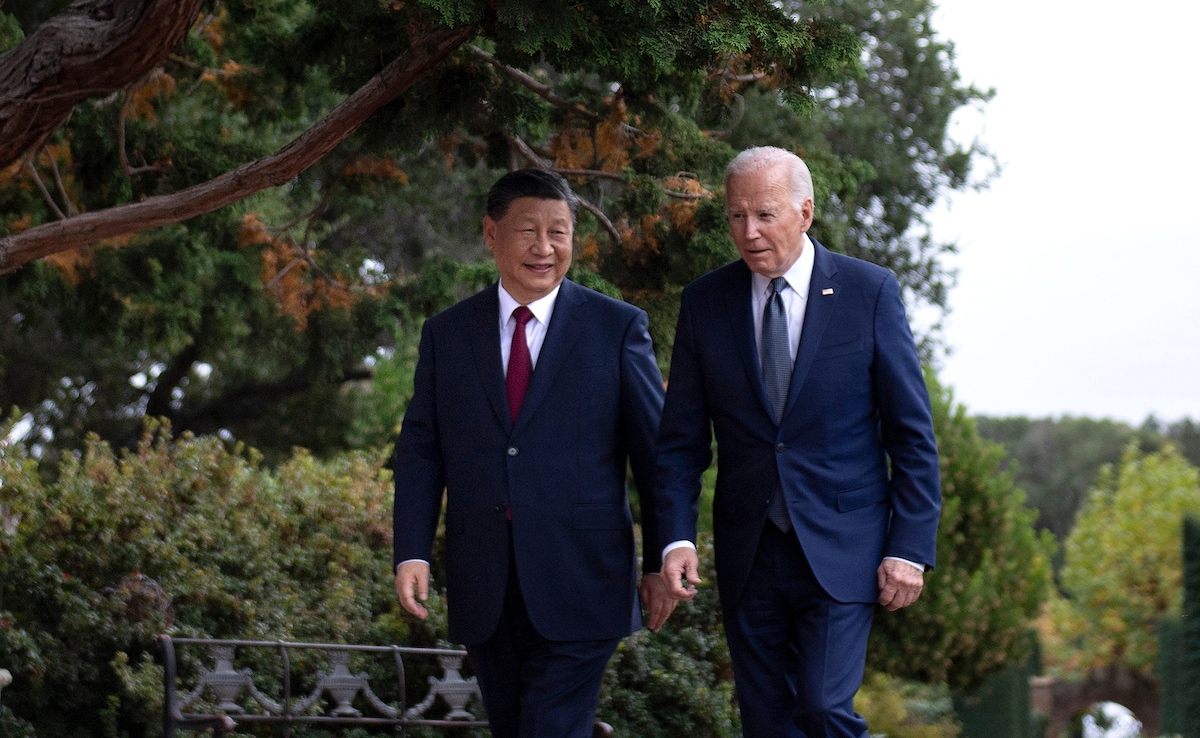
A report said Xi Jinping believes that people hold the key to state-to-state relations (File)
Beijing:
What a difference eight months makes: In March, shortly after the US shot down a suspected Chinese surveillance balloon, President Xi Jinping blamed it for challenges faced by China’s economy, complaining of “all-round containment”.
Then on Wednesday, US and Xi agreed to open a presidential hotline, resume military-to-military communications and work to curb fentanyl production, showing tangible progress in their first face-to-face talks in a year at a summit in California.
While key issues like US sanctions on chip exports remain unresolved, Chinese state media is now striking a different tone, focusing on Xi’s smile during past trips to Iowa, fireside chats with its residents, and sharing chocolates with Biden.
Clips from the summit on China’s social media show the two leaders walking in gardens at the site of the talks, and chatting by Xi’s official limousine, with discussion of US tech curbs and tension over Taiwan featuring less prominently.
The Chinese rhetoric seeks to show Xi to a domestic audience as Biden’s equal and highlights his desire to stabilise ties as China grapples with a moribund economy, analysts say. It also sends a signal of approval to the bureaucracy and businesses on engaging with Americans.
“It reflects a very strong desire on the part of Chinese leaders to stabilise relations with the US and push for more cooperation,” said Li Mingjiang, international relations scholar at the Rajaratnam School of International Studies in Singapore.
“There’s this fundamental message in the Chinese narrative that the Chinese leader is capable of managing China-U.S. relations … he is the one who gives instructions to the US and the American leadership on how to manage the bilateral ties.”
China’s domestic propaganda machine worked overtime to pave the way for Xi’s pivot, also evident at a dinner with US executives, when he pledged that China was ready to be a “partner and friend” of the U.S. and there was “plenty of room for bilateral cooperation”.
With official ties still strained, Chinese state media has focused on relations between the people and emphasised the potential for cooperation and importance of the summit for the Asia-Pacific region.
“The international community watches with bated breath, recognising the weight of this meeting,” the state news agency Xinhua said in an editorial. “When China-U.S. relations are good, the region benefits; when relations sour, the region suffers.”
‘American Friends’
Xinhua also ran a 1,500-word report reminiscing about Xi’s past visits to the US.
“Xi never forgets his American friends and believes that people hold the key to state-to-state relations,” the news agency said.
The report cited Iowans who helped coordinate a 1985 trip Xi made to the state as a young official, describing his “smile that would not stop”, and lauding his curiosity. It also described Biden and Xi sampling chocolates from a box during a past exchange.
Gary Dvorchak, an Iowan considered by Xi an old friend of China, said Xi’s fondness for Iowa was genuine but that the Chinese leader also used his ties to the state for propaganda value.
“It humanises him and it gives him an ability to show a connection to the American people and bypass the American media,” said Dvorchak.
“They use it when they need to bolster his support domestically or internationally,” said Dvorchak, who said he thought it was canny public relations.
“Part of the reason it works is because those feelings are real.”
But even on censored Chinese social media users found ways to make critical comments on the tone of the official commentary.
“Where did the relations improve? Tariffs, chips, studying overseas, none of these are mentioned.”
On the Weibo Chinese microblogging site, the most popular hashtag on Thursday still harked back to tension over Taiwan: “China must be and will be reunified.”
(Except for the headline, this story has not been edited by NDTV staff and is published from a syndicated feed.)







